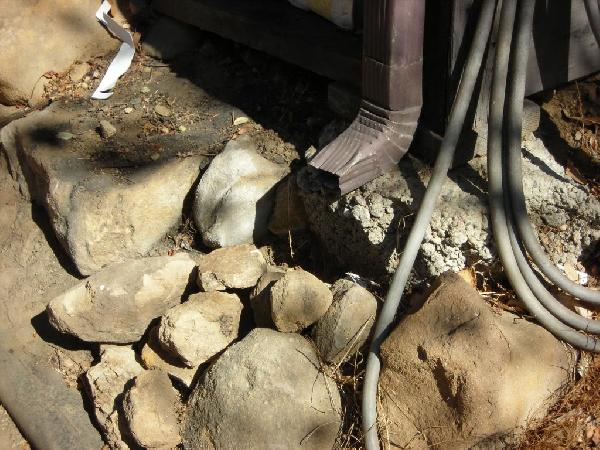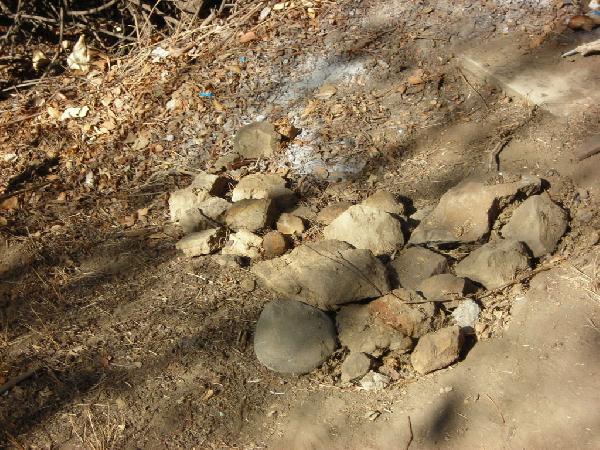| About Us | Contact Us | Calendar | Publish | RSS |
|---|
|
Features • latest news • best of news • syndication • commentary Feature Categories IMC Network:
Original Citieswww.indymedia.org africa: ambazonia canarias estrecho / madiaq kenya nigeria south africa canada: hamilton london, ontario maritimes montreal ontario ottawa quebec thunder bay vancouver victoria windsor winnipeg east asia: burma jakarta japan korea manila qc europe: abruzzo alacant andorra antwerpen armenia athens austria barcelona belarus belgium belgrade bristol brussels bulgaria calabria croatia cyprus emilia-romagna estrecho / madiaq euskal herria galiza germany grenoble hungary ireland istanbul italy la plana liege liguria lille linksunten lombardia london madrid malta marseille nantes napoli netherlands nice northern england norway oost-vlaanderen paris/Île-de-france patras piemonte poland portugal roma romania russia saint-petersburg scotland sverige switzerland thessaloniki torun toscana toulouse ukraine united kingdom valencia latin america: argentina bolivia chiapas chile chile sur cmi brasil colombia ecuador mexico peru puerto rico qollasuyu rosario santiago tijuana uruguay valparaiso venezuela venezuela oceania: adelaide aotearoa brisbane burma darwin jakarta manila melbourne perth qc sydney south asia: india mumbai united states: arizona arkansas asheville atlanta austin baltimore big muddy binghamton boston buffalo charlottesville chicago cleveland colorado columbus dc hawaii houston hudson mohawk kansas city la madison maine miami michigan milwaukee minneapolis/st. paul new hampshire new jersey new mexico new orleans north carolina north texas nyc oklahoma philadelphia pittsburgh portland richmond rochester rogue valley saint louis san diego san francisco san francisco bay area santa barbara santa cruz, ca sarasota seattle tampa bay tennessee urbana-champaign vermont western mass worcester west asia: armenia beirut israel palestine process: fbi/legal updates mailing lists process & imc docs tech volunteer projects: print radio satellite tv video regions: oceania united states topics: biotechSurviving Citieswww.indymedia.org africa: canada: quebec east asia: japan europe: athens barcelona belgium bristol brussels cyprus germany grenoble ireland istanbul lille linksunten nantes netherlands norway portugal united kingdom latin america: argentina cmi brasil rosario oceania: aotearoa united states: austin big muddy binghamton boston chicago columbus la michigan nyc portland rochester saint louis san diego san francisco bay area santa cruz, ca tennessee urbana-champaign worcester west asia: palestine process: fbi/legal updates process & imc docs projects: radio satellite tv |
printable version
- js reader version
- view hidden posts
- tags and related articles
View article without comments Rainwater Harvesting: Brad Lancaster shares DIY water wisdomby Jennifer Murphy Sunday, Jun. 11, 2006 at 5:14 PMtruffula_tuft@hotmail.com Brad Lancaster, a permaculture designer and educator based in Tucson AZ, toured California in April with his new, self-published book Rainwater Harvesting for Drylands. I was able to see his presentation at Eco Village on April 26th, hosted by the Los Angeles Permaculture Guild.
Tucson has many similarities to Los Angeles in its landscape and history of water management. Brad opened the slideshow with a picture from 1900 of the meandering Santa Cruz River flowing through Tucson. It was lined with Cottonwood trees and lush riparian shrubs and looked like photos of the Los Angeles River a hundred years ago. The Santa Cruz flowed year-round at that time, and the water table was only 20’ below the surface.
Fast forward 100 years and we see another slide of the same landscape. The river has been straightened and channelized, meaning it was turned into a concrete canal. Over 25% of the city’s surface area is now paved. The river is dry for much of the year and the water table has sunk to 300 feet below the surface - 15 times lower than it had been! Tucson and many communities throughout the southwest are now consuming what is called “fossil water”, the deep groundwater that has remained in aquifers for thousands of years until now. Extraction of fossil water is sometimes referred to as mining because it is a non-renewable resource. The dramatic changes in Tucson’s water resources were caused by over-consumption, combined with loss of rainwater recharge. The amount of rainfall had not changed over this period, but the ability of the earth to soak it up had been dramatically limited. A meandering river takes a long time to get from point A to point B. As it flows, it soaks into the marshy banks, feeding the trees and plants and recharging the underground aquifers. A channelized river moves fast and does not soak in. All the Cottonwood trees and most of the shrubs from the previous slide were gone because they needed that slow moving water. Buildings and pavement also limit how much water can soak in. As the water table sinks, it picks up salts from the soil and the water quality diminishes. During heavy rains more contaminants pollute the river. The water, having nowhere else to go, sweeps through the city streets, carrying oil, trash and toxic residues with it. Strangely, rainwater in this desert town is now considered a problem rather than a solution. Tucson gets an annual rainfall of 12 inches (Los Angeles gets 15). If you divide the surface area by the population, and then again by 365 days, you get 235 gallons per person per day. That’s a lot of fresh, free water. The average person’s use is 165 gallons a day. So in theory, what falls on the city could provide for it’s all water needs. You wouldn’t want to use all the rainwater this way, but it proves a point. With conservation measures and wise management, dry lands like Tucson could develop water self-sufficiency. But instead they import most of what they use (as we do) from the Colorado River, the most endangered river in America, at a cost of $80 million annually. One third of that 165 gallon average daily use goes on landscapes. In LA it’s closer to one half. This is crazy. We bring in water from 700 miles away, pay to process it to a high level of purity and then take half of it and pour it on our lawns. We dump a bunch more down our toilets. Brad has a simple formula to change these bad habits. We need to make rainwater the primary irrigator for landscapes, with grey water (recycled from washing machines and sinks) being the secondary provider. Municipal water should only be used for drinking and washing. His book outlines exactly how to do this. Brad spent time in Africa studying water management. He told some great stories about a man called the Water Farmer. Inspired by the Garden of Eden and educated by long and thoughtful observation, Mr. Phiri Maseko and his family turned a wasteland into an oasis, in the driest region of Zimbabwe. They did this by teaching themselves how to harvest the rain. Brad explained the eight basic principles of water harvesting using Mr. Phiri’s story: 1) Long and thoughtful observation. Notice what is working and what isn’t. Mr. Phiri saw that the valleys of his land were grassy and the rolling hilltops were bare and eroded. He paid attention to what kinds of plants grew where. 2) Start at the top and move down. The largest and least expensive water storage tank is the soil. Earthworks are tools for holding onto water and recharging the water table. Mr. Phiri built rock walls to catch brush and soil runoff in the heavy summer rains. This created mulch sponges which held onto the water much longer than bare hillsides. 3) Start with small and simple strategies and have fun Don’t give in to the “my cistern is bigger than your cistern” style of water management, at least not until you’ve thoroughly explored this list. Planting a tree is a simple and powerful step. 4) Slow, spread and sink the rainwater (infiltration). American gardeners have an illogical habit of raising up plants on mounds and paving the low spots in our yards. Maybe we’re trying to make them look bigger (we are so impatient). The mounds then shed the rainwater and the plants struggle or dry up. The rainwater spills into the streets and down the storm drains. We can keep the water on the land longer by planting in the soil basins and raising the pathways instead. Planting perennials rather than annuals in the basins also helps, because they have stronger root systems. Mr. Phiri created swales and banks to slow down the water at every opportunity. He dug a huge basin at the foot of the hill to collect the water, allowing it the time needed to sink in. 5) Always have an overflow Brad said that 90% of the rain in Southern California can be easily managed, so only 10% of it needs to go into the storm drains. But we do need the storm drains for those hundred year floods. 6) Maximize living and organic material As Mr. Phiri told Brad, plant water not just plants. Mulches and green cover keep the soil cool and slow evaporation. The roots hold onto moisture. Lay it on thick! An example of a water wise landscape design that Brad helped create in Tucson, is Milagro Cohousing. They integrated rainwater cachement (10 times as much as a typical city system) and 100% wastewater recycling (wetlands, underground irrigation system, native and edible plants). Construction costs were partially offset by not having to install sewage pumps. 7) Maximize and enhance the function of all strategies, stack functions. For example - consider the placement of plants and earthworks as they relate to heat and sun angles. A deciduous fruit tree on the Westside of a building would be a good bet, providing shade and fruit in the summer, sun access in the winter. 8) Long and thoughtful observation, again. Create a feedback loop. Ask what worked and what didn’t. Build on the successes. With that, Brad wrapped up his presentation to rousing applause. He sold a lot of his new books to the crowd, as well as some of Art Ludwig’s grey water books (see resources). Rainwater Harvesting for Drylands is volume 1 of a trilogy that will help readers reduce the cost of living, teach self-reliance and cooperation, and create “living air conditioners of vegetation growing beauty, food, and wildlife habitat”. It is full of stories of people who are successfully welcoming rainwater into their landscapes and invites us to do the same. Resources: www.harvestingrainwater.com/ Brad Lancaster’s website, you can order his book here www.harvesth2o.com/ online rainwater harvesting community www.oasisdesign.net/ Art Ludwig’s site about grey water www.permacultureactivist.net/ information on permaculture design, edible landscaping, bioregionalism, cooperative action, aquaculture, natural building, earthworks, renewable energy… http://lapcguild.tribe.net/ and www.arashi.com/mailman/listinfo.cgi/lapg Los Angeles Permaculture Guild Image from http://you-are-here.com Los Angeles River at Griffith Park, winter 2003
Report this post as:
Harvesting Rainwaterby Ecological Sanity Tuesday, Sep. 11, 2007 at 10:43 AM
This article piqued my interest in Brad Lancaster's book, which I bought for someone as a gift (but not without first reading it myself).
Because my house is on a hill far, far from the street, water runoff isn't an issue for me (as far as I know). However, the rainwater on my roof collects in a pipe and is spat out on ground level, creating erosion on the hillside. Inspired by this book, I've been putting rocks below the pipe's water outlet to disperse the h20 and allow it to collect in areas with mulch in them. These rocks also fill up the slice iun the hillside cause by the erosion. Also, I've been placing compost piles on barren, hilly ground to absorb rainwater.
Report this post as:
Another picture...by Ecological Sanity Friday, Sep. 14, 2007 at 7:26 PM
This is a gouge in the hillside made by about 70 years of concentrated runoff water from the roof. I've filled it with pieces of nearby sandstone.
Report this post as:
|





